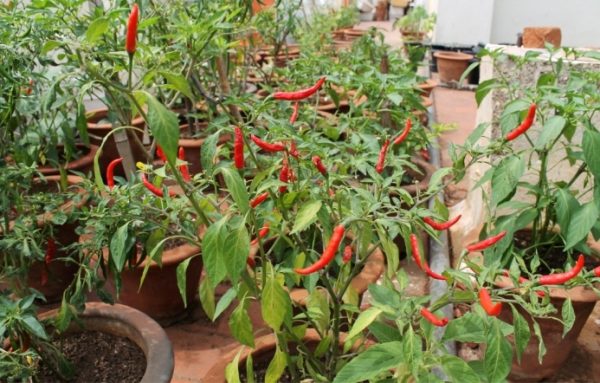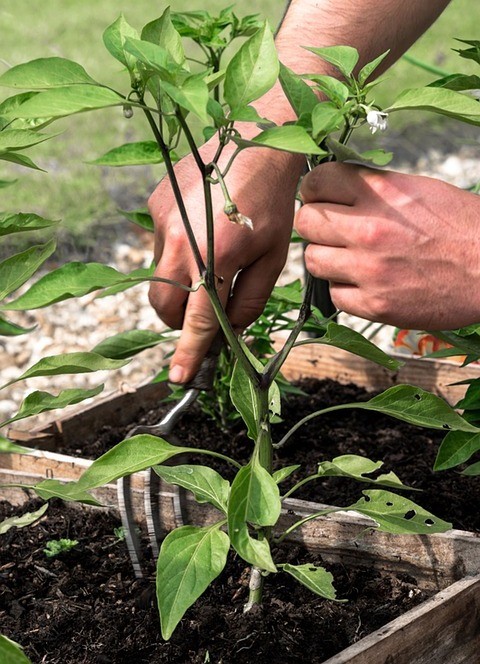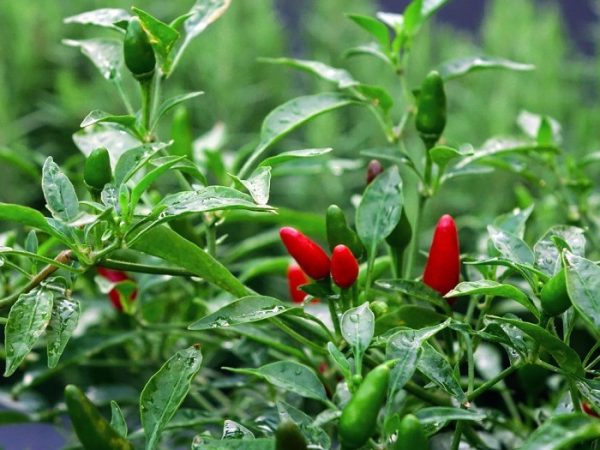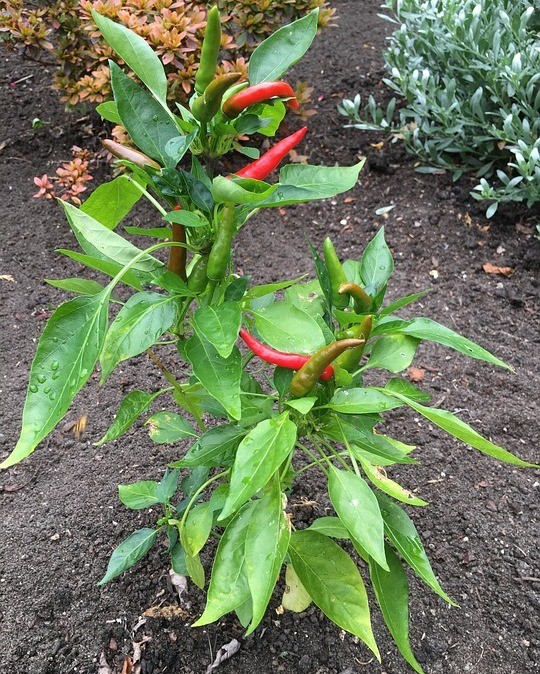Growing Chilli in Pots:
The following content is all about Growing Chilli in pots. This can be assumed for Growing chillies on the terrace, Growing chillies in containers, Growing chillies on the balcony, Growing chillies in backyards, and Growing chillies indoors.
Introduction to Growing Chilli in pots
- Botanical name Capsicum annum – green chilli.
- Family: Solanaceae.
- Chromosome no 2n = 24.
- Origin: Green chilli is originated in Tropical America.
Five major cultivated species in the Genus Capsicum
- Capsicum annuum
- C. frutescens
- C. chinense
- C. pendulum
- C. pubescens.
Importance and nutritive value of green chilli
- Green chillies are rich in proteins 2.9 g per 100 g. Ca, Mg, P, K, Cu and S. vitamins like Thiamine, Riboflavin and Vitamin C.
- Chillies are the major ingredients in curry powder. In powdered form, it is mixed with red or cayenne Chilli.
- Chilli pulp is pickled in strong vinegar or brine. Extracts of chillies are used in the
- Production of Ginger beer and other beverages.
- Cayenne Chilli is incorporated in poultry feeds; green chillies are rich in Rutin which has a pharmaceutical use.
- The pungency of chillies is due to capsaicin. The pigment (color) in chillies is due to capsanthin also contains many other oleoresins.
Readthis: Growing Cabbage In Pots.
Suitable soil for Growing Chilli in pots
- The soil is should be drained loamy soils rich in organic matter with pH range 6.5-7.5 without any inoculums of pest and diseases.
Seed treatment for Growing Chilli in pots
- Treat the seeds with Trichoderma border Pseudomonas fluorescens and should be sown in lines spaced at 10 cm in raised nursery beds and should be covered with fine coarse sand.
- Watering with rose can have to be done daily. Drench the nursery with Copper oxychloride of water at 15 days intervals against damping-off disease. Apply Carbofuran 3 G at the time of sowing.
Nursery management in for Growing Chilli in pots

- for the seedling production to cover 1 ha.
- The nursery area should be with a 50% shade net and cover the sides using a 45/60 mesh insect-proof nylon net.
- Beds should be raised from 1.5 m width and convenient length and place HDPV pipes at 2 to 3 m intervals for further protection with polyethylene sheets during rainy months.
- The sterilized coco peat @ 315 kg with 5 kg neem cake along with Azospirillum and phosphobacteria each @ 1 kg. Approximately 1.5 kg of coco peat is required for filling one protay. 320 portrays (98 cells) are required for the production of 28,999 seedlings, which are required for one hectare adopting a spacing of 85 x 55 x 40 cm in a paired row system.
- The treated seeds should be sowed in portrays @ 1to 2 seeds per cell.
- The seeds should be covered with coco peat and keep the trays one above the other and cover with a polythene sheet till germination starts.
- Then a week after placing the portrays with germinated seedlings individually on the raised beds inside the shade net.
- Water can be applied by using rose cans every day up to seed germination. Drench with 19:19:19 @ 0.5% (5g/l) at 18 to 20 days after sowing.
- If we found that it is difficult to prepare the seedbed or nursery production so we can be buying the green chilli seedlings from the market directly.
Transplanting the for Growing Chilli in pots

- While transplanting the seedling everyone should take care of root damage of seedlings they are so sensitive, easily damage while uprooting the seedling.
- The seedlings are transplanted to pots once they have two sets up to 3 leaf stage, rather than leaves that are just beginning to grow.
- Make sure about where pots are places whether it is small are big according to place pot size should be taken and plant density should less, better to use a large enough pot for large places. If you plan on keeping each green chilli plant separate, a 2-inch or 4-inch (5-cm or 10-cm) pot should suffice. You can also combine multiple green chilli plants into a single pot if it is larger.
- The soil is filled with the disinfected soil-borne inoculums soil and it should be sterilized. Use loose, well-draining soil, preferably one with a high content of organic matter.
- Next, dig a small hole in the dirt. The hole should be the same depth and width as the compartment your seedling currently sits in.
- If planting one chilli seedling per each pot, then dig the hole in the centre of the pot. If planting multiple seedlings in one pot, dig multiple holes that are at least 2 inches (5 cm) apart.
- Transfer the seedling to the new pot. It is placed gently on the seedling tray by squeezing on the sides of the plastic compartment. Once the seedling has been removed, roots, soil, and all place in the hole.
- Make a small hole at the bottom end of the pot for aeration and for removing the extra water.
- After transplanting plants should be maintained at optimum temperature 220c to 28 0
Nutrient management for Growing Chilli in pots
Read this: Organic Vegetable Gardening.

- It needs good fertile soils supplied humus. Excess nitrogen leads to an increase in vegetative growth and delays maturity. 10 tons to 15 tons of well-decomposed FYM need to be applied in the last ploughing.
- Besides that 75 kg N, 75 kg P, 55 kg K per ha is to be applied.
- The entire quantity of well-decomposed farmyard manure (FYM), fertilizers like phosphorus, potassium and half of nitrogen should be applied at the time of soil preparation.
- The remaining half nitrogen is to be given as top dressing in two equal splits at a one-month interval of transplanting.
Watering for Growing Chilli in pots
- Watering should be given at critical stages like root ionization, flowering, and pods formation.
- Take care for watering by soil and root should wet watering should be done daily or by interval vice.
Pollination in Growing Chilli in pots
- Pollination is done by hand throw dusting or transferring the pollen by cotton directly to stigma.
Pest and disease management in Growing Chilli in pots

- The important pest attacking chilli and capsicum are thrips, aphids, pod or fruit borer and mites.
- The thrips and aphids can be controlled by spraying Dimecron (systemic pesticide), pod borer can be controlled by spraying Nuvacron and the mites can be controlled by spraying Ethane.
- The major diseases affecting the plants are dye back or fruit rot, powdery mildew, and bacterial leaf spot. Spraying Dithane M-45 should be carried to control dieback Karathane for powdery mildew and Agromycin for leaf spot diseases in chilli Growing.
Harvesting in Growing Chilli in pots
- Flowering begins 40 to 60 days after transplanting depending upon the variety, climate, nutritional status of the plant.
- Fruits start ripening about 90 days after transplanting in pots and picking should start and may continue for 2 to 3 months.
- Commercial chilli variety yields 10 to 15 Quintal/ha. Hybrids can give up to 400 to 500 Q per ha. Green chillies can be stored for about 40 days at 0°C and 95 to 98 % RH. Dried chillies can be kept for a month in dry places well protected from insect pests.
- Picking the fruit by leaving stalk up to 3 to 5 cm above the fruit and packing the fruit in the wooden boxes or polythene cover.
In case if you are interested in this: Hydroponic Nutrient Chart.
- Types of Pesticides Used in Agriculture: A Beginner’s Guide
- Economical Aquaculture: A Guide to Low-Budget Fish Farming
- 15 Common Planting Errors That Can Doom Your Fruit Trees
- How to Make Houseplants Bushy: Effective Tips and Ideas
- Innovative Strategies for Boosting Coconut Pollination and Yield
- Pollination Strategies for Maximum Pumpkin Yield
- The Complete Guide to Chicken Fattening: Strategies for Maximum Growth
- Natural Solutions for Tulip Problems: 100% Effective Remedies for Leaf and Bulb-Related Issues
- Revolutionizing Citrus Preservation: Towards a Healthier, Greener Future
- Natural Solutions for Peony Leaf and Flower Problems: 100% Effective Remedies
- Maximizing Profits with Avocado Contract Farming in India: A Comprehensive Guide
- Natural Solutions for Hydrangea Problems: 100% Effective Remedies for Leaf and Flowers
- The Ultimate Guide to Choosing the Perfect Foliage Friend: Bringing Life Indoors
- From Sunlight to Sustainability: 15 Ways to Use Solar Technology in Agriculture
- The Ultimate Guide to Dong Tao Chicken: Exploring from History to Raising
- The Eco-Friendly Makeover: How to Convert Your Unused Swimming Pool into a Fish Pond
- Mastering the Art of Delaware Chicken Farming: Essentials for Healthy Backyard Flocks
- 20 Best Homemade Fertilizers for Money Plant: DIY Recipes and Application Methods
- How to Craft a Comprehensive Free-Range Chicken Farming Business Plan
- Brighten Your Flock: Raising Easter Egger Chickens for Beauty and Bounty
- How to Optimize Your Poultry Egg Farm Business Plan with These Strategies
- Subsidy for Spirulina Cultivation: How Indian Government Schemes Encouraging Spirulina Farmers
- Ultimate Guide to Raising Dominique Chickens: Breeding, Feeding, Egg-Production, and Care
- Mastering the Art of Raising Jersey Giant Chickens: Care, Feeding, and More
- Ultimate Guide to Raising Legbar Chickens: Breeding, Farming Practices, Diet, Egg-Production
- How to Raise Welsummer Chickens: A Comprehensive Guide for Beginners
- How to Protect Indoor Plants in Winter: A Comprehensive Guide